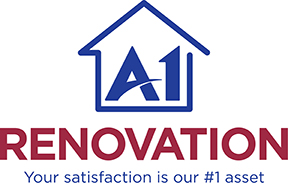Retail stores renovation generally falls into a couple major categories:
- Retail store additions, where the business is expanding the building’s size, adding windows, or changing the core architecture of the building.
- Retail store upfits, where parts of the retail space have to be reconfigured for a new type of business to use the space, such as converting a restaurant area into a clothing store.
Here are some ways renovating a retail space can improve the customer experience.
The Opportunity To Design A Path For Customers To File
The most successful retail stores make the design of their interior the focus. How a customer enters the store, the products they see first and how they are guided through the rest of the experience matters.
Everything plays into this, from the width of the aisles to whether products are arranged on tables or shelves. Wider aisles allow for quicker browsing, while narrower aisles tend to encourage impulse buying.
Walls can be useful to separate areas visually, but other times a more open approach creates the right touch.
Studies show that in North America, most customers instinctively look to their right first when entering a space. Knowing this, what you arrange to the customer’s immediate right as they enter a store can set the tone and draw attention to those items. Perfect for seasonal items.
Some retail stores employ a loop design, which helps prevent customers from wandering haphazardly throughout the store. It gives them a sense of flow, and allows store owners to arrange high ticket or priority items along that path. It also gives customers a feeling that they can get the lay of the land before making a purchase, which they appreciate.
Change The Lighting, Change the Mood
We’ve talked a bit before about how much of a difference upgraded lighting can make. Not simply in the look of the light fixtures themselves, but the color tone and brightness can affect the way the room — and the products — look to customers.
In fact, some studies suggest that bright lights can intensify people’s emotional response to things. If participants in that study were going to like or dislike something they were looking at under bright lights, that feeling was intensified.
Bluer-tone lighting can make people feel more energetic, whereas more natural light (whiter light) can improve mood and create feelings of well being.
These effects are all subtle, but many of the elements that create a strong retail experience are. Obviously there’s a lot to bear in mind choosing the right lighting for your retail business to ratchet this in.
This is a worthwhile upgrade for older retail stores that need to be modernized. But it’s also common for retail upfits where the existing lighting may have worked for the previous business, but it’s all wrong for the new business.
The Right Flooring For the Presentation
Hardwood gives the area a warm, cozy feel. You often see it in furniture stores, but also in certain clothing stores.
Darker tones create some great opportunities for contrast with lighter colors, and can set displays off with visual impact.
Alternatively, light toned floors can create a sense of airiness and openness. That can make the retail area feel larger, which is useful for aisles and framing the presentation of shelving that might otherwise feel tight.
Concrete is becoming a popular choice in restaurants, bars, and coffee shops for its durability and how easily it can be cleaned from spills.


